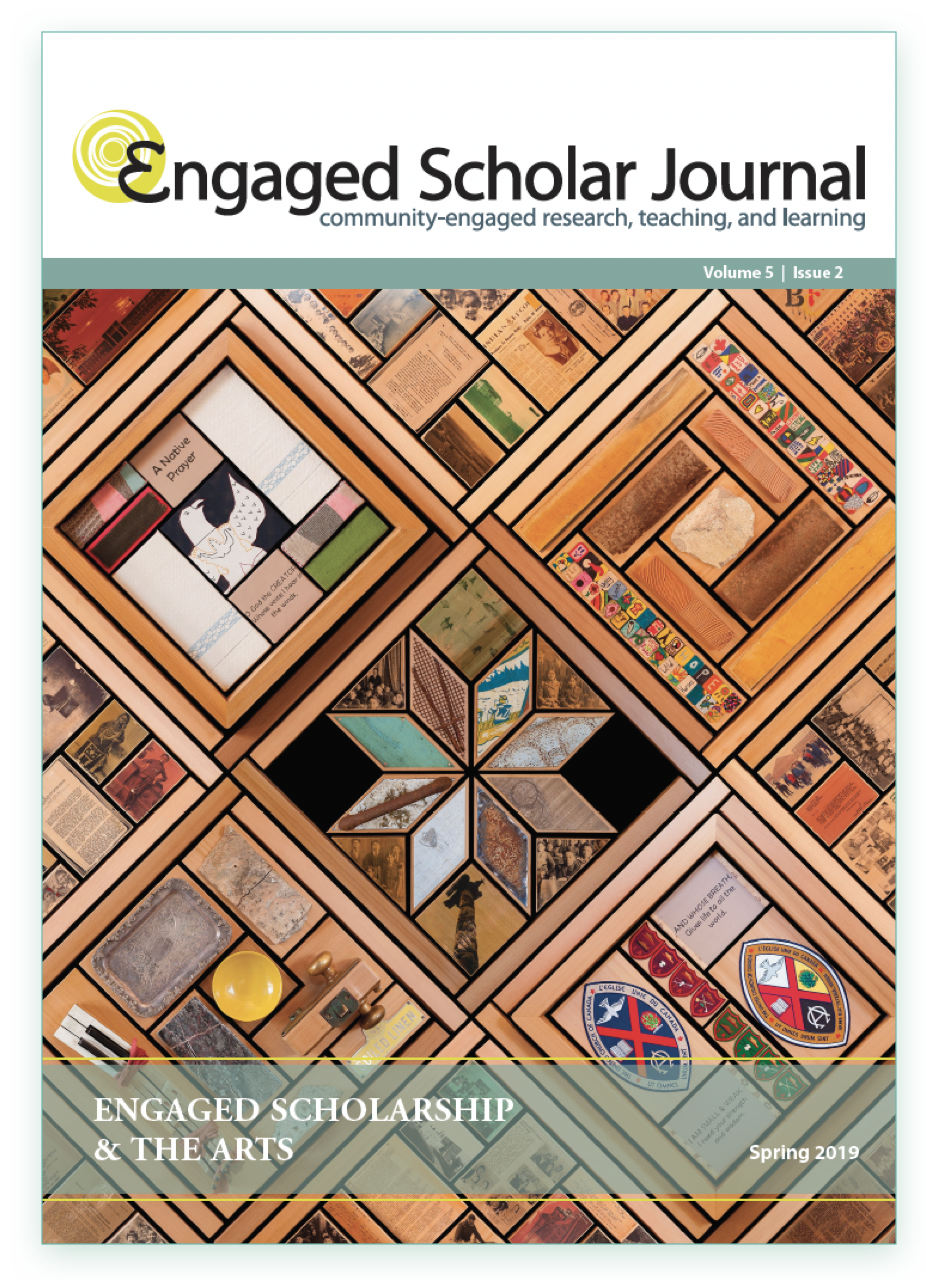Visualizing Inclusive Leadership: Using Arts-based Research to Develop an Aligned University Culture
DOI:
https://doi.org/10.15402/esj.v5i2.68339Keywords:
Arts-based methods, inclusive leadership, engaged scholarship, organizational culture, neoliberal universityAbstract
Values of exclusive leadership characterize the administration of the neoliberal university, but are incongruous with values of inclusive leadership often enacted in the work of teaching, learning, and research. This article explores how an action research project to advance inclusive leadership at Royal Roads University adapted a visual data elicitation method and used metaphor analysis to reveal opportunities to align espoused, communicated, and enacted values. Images evoke metaphors (Mumby & Spitzack, 1983; Vakkayil, 2008) that enable researchers engaged in their own organizational development to elicit creative possibilities that are “covered up by the familiarity of everyday experience” (Koch & Deetz, 1981, p. 13). By eliciting desired qualities associated with inclusive leadership (Rayner, 2009), we have been able to make visible and model inclusive messages, structures, behaviours, strategies, and actions as the building blocks of a culture built on the value of inclusivity and collaboration, and the principles of diversity and interdependence. One key insight of the research is that arts-based action research effectively equips academic and administrative leaders to transcend deficit-based problem solving and the reductionism associated with neoliberal university management and to approach organizational development with the creative energy that arts-based research inspires.
Downloads
Published
How to Cite
Issue
Section
License
Authors who publish with this journal agree to the following terms:
- Authors retain copyright and grant the journal right of first publication with the work simultaneously licensed under a Creative Commons Attribution License CC BY 4.0 that allows others to share the work with an acknowledgement of the work's authorship and initial publication in this journal.
- Authors are able to enter separate, additional contractual agreements for the non-exclusive distribution of the journal's published version of the work (e.g., post it to an institutional repository or publish it in a book), with an acknowledgement of its initial publication in this journal.
- Authors are permitted to post their work online (e.g., in an institutional repository or on their website) after the publication of their work in the Engaged Scholar Journal.
- Please note that while every opportunity will be taken to ensure author participation in the editing process, due to time constraints final copyediting changes may be made before publication to ensure APA adherence throughout all submissions.




